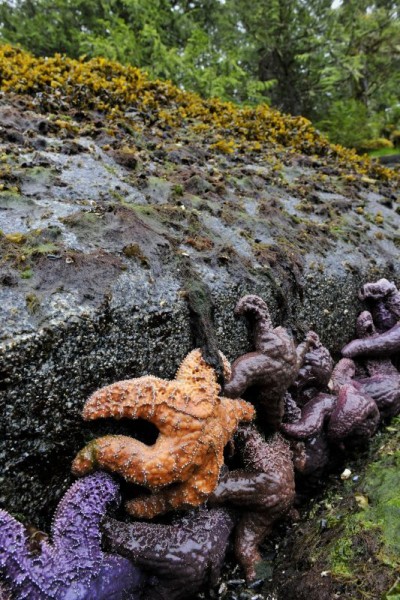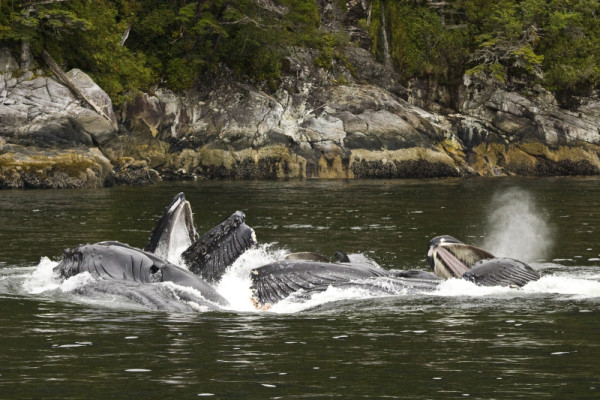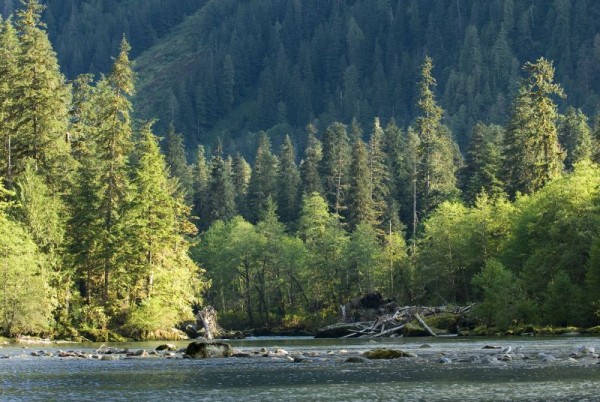MaPP: A big plan for the Great Bear Sea
On April 27th 2015, the province of British Columbia signed an agreement with 18 Coastal First Nations, whose traditional marine territories cover 102,000km2 of BC’s ocean environment – an area about the same size as Iceland. Many of us know this part of Canada as the Great Bear Sea: a remarkable place and home to temperate rainforest and productive ocean habitat where salmon, orca, grizzlies and a myriad of other species live. It is one of this country’s truly wealthiest places in terms of biodiversity.

The Marine Planning Partnership (MaPP) agreement represents a commitment to change the way decisions are made about how we use the marine environment. Rather than relying on a fragmented approach where each sector pursues its own goals independently of one another, the MaPP plan calls for a coordinated approach that recognizes many ocean uses, from traditional harvest to commercial fishing to tourism, and marine transportation, as well as future uses such as renewable energy. Most importantly, underlying all of this is the fundamental principal of the plan: the protection of biodiversity. In WWF’s view, this approach to ocean management is a major cause for celebration and deserves to be replicated in as many places as possible.
The commitment to take this step was first made almost 13 years ago, when the Canada Oceans Strategy (2002) first flagged the need for a more comprehensive and integrated management approach. The subsequent national Oceans Action Plan furthered the case for change, noting how our current approach was resulting in “failing oceans health, including some declining fish stocks and increasing fluctuations of stocks, increasing numbers of marine species at risk and invasive species, marine habitat loss, and declining biodiversity.” Some progress has been made at the federal level to deal with this sobering assessment, though less than other parts of the world where marine planning has made major strides.

All of this makes the steps being taken by Coastal First Nations and the province of BC even more commendable. The MaPP plans go beyond well intentioned principles and include concrete steps and goals. For example, the plan aims to build capacity in coastal communities to better monitor ocean conditions; to identify thresholds in nature that must be respected; and to limit the amount and intensity of impacts from activities that could deplete the marine environment. The 102, 000km2 covered by the plans have been categorized into zones to guide decision-making about what kinds of uses are compatible or not, and what objectives are most important to see realized. They were informed by a 3-year process of consultation with multiple sectors, including conservation groups. Throughout, MaPP drew on science expertise, as well as traditional and local knowledge to come up with recommendations.
Most importantly, MaPP explicitly recognizes that a healthy marine environment is the foundation for strong economies and resilient communities. In technical jargon this is called “Ecosystem Based Management” or EBM. Or to put more plainly: nature has limits and we must respect them.

© Andrew S. Wright / WWF-Canada
This is a major step forward, but there’s still a lot of work that needs to be done. Key federal departments with authority over marine sectors such as shipping and commercial fishing are at the periphery of MaPP. The slew of development plans on BC’s north coast continue to pressure governments into shortsighted decision-making. And certain projects, like Enbridge’s Northern Gateway, stubbornly refuse to recognize that the risks they pose are not acceptable in the region. With the signing of the MaPP plans, the stage is set to change the tone of marine resource management on much of BC’s coast. WWF will continue working to ensure that the full potential of the MaPP plans are realized so that we can truly achieve the goal of conserving the ecological, cultural and economic treasure that is the Great Bear region.
A major commitment has been made. Now is the time for action!

